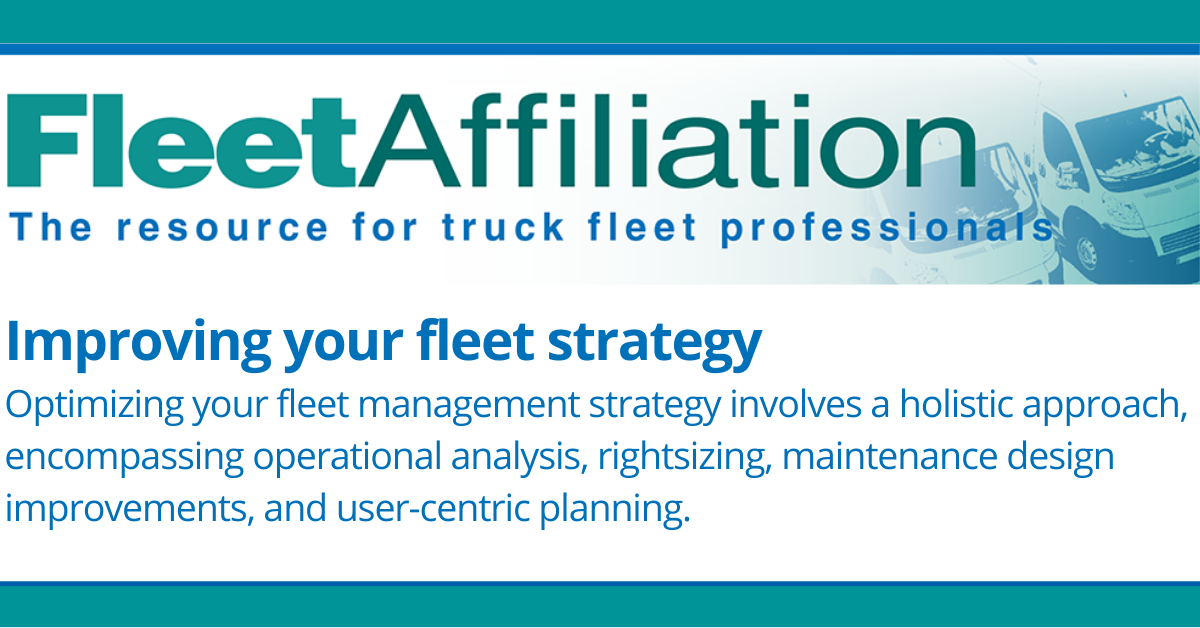
Published in September 2023 Fleet Affiliation.
Much like a well-crafted business plan, a commercial fleet plan plays a pivotal role in the success of any fleet operation. Thoughtful and calculated strategies serve as the bedrock for efficient operations and improved financial outcomes. From initial design to ongoing maintenance, several steps can enhance both the operational and financial aspects of your fleet operations.
Operational analysis
Before diving into any planning, it's imperative to gain a comprehensive understanding of your organization's operations and missions. We’re in a world of constant expansion and change, and operational needs are no different. Whether your fleet includes specialized equipment or mass-produced vehicles, it’s crucial to view your operations through the right lens. To embark on this journey, you must first comprehend the “how,” “what,” “where,” and “why” of your operations. This understanding lays the foundation for effective planning.
Rightsizing
Operations and missions within an organization are subject to continuous evolution. To progress, it’s essential to step away from the mindset of “this is the way it has always been done.” Relying on past specifications can hinder progress. Forward-thinking can save both time and money. Rightsizing does not solely imply downsizing or reducing assets; instead, it’s an exercise in ensuring the appropriate number of vehicles and equipment is allocated to each task. It’s about finding the perfect fit.
Designing your truck for streamlined maintenance
Many fleet procurement professionals grasp the basics of process improvement, even if they are not Six Sigma experts. Recognizing the value of assessing current asset performance, identifying operational shortcomings, and enhancing design is essential. However, maintainability is often overlooked. Design improvements tend to be driven by end-user and operator experiences. Balancing maintainability with reliability and durability is a challenge. While enhancing reliability and durability often involves specifying rugged components, it can increase costs and add weight. Integrating maintainability into equipment design can result in lower lifecycle maintenance costs.
Simplified maintenance design saves time, reducing labor costs for technicians. It addresses how easily a unit can be maintained or repaired, an aspect often ignored. Manufacturers are now considering efficiency in their product designs. After all, trucks should be assembled, not disassembled. Complex commercial vehicles often incorporate components from various manufacturers, sometimes without consideration for compatibility. Furthermore, manufacturers might not fully understand how end-users will utilize their products. Evaluating vehicle design in light of these issues can reduce overall maintenance costs with minimal impact on initial purchase costs.
Understand the user
Planning and implementing changes can be challenging, especially for end-users. When end-users feel excluded from decision-making, it can have negative repercussions on operations. Understanding their needs and integrating them into long-term plans can unify multiple teams. When operations collaborate with management, whether fleet management or supervisory management, it fosters a natural symbiotic relationship that enhances efficiency. When all facets of the organization work together towards a common goal, it positions the organization strategically to reduce costs and adapt to evolving needs.
In conclusion, optimizing your fleet management strategy involves a holistic approach, encompassing operational analysis, rightsizing, maintenance design improvements, and user-centric planning. By adopting these principles, your organization can achieve operational excellence and long-term success in fleet management.
